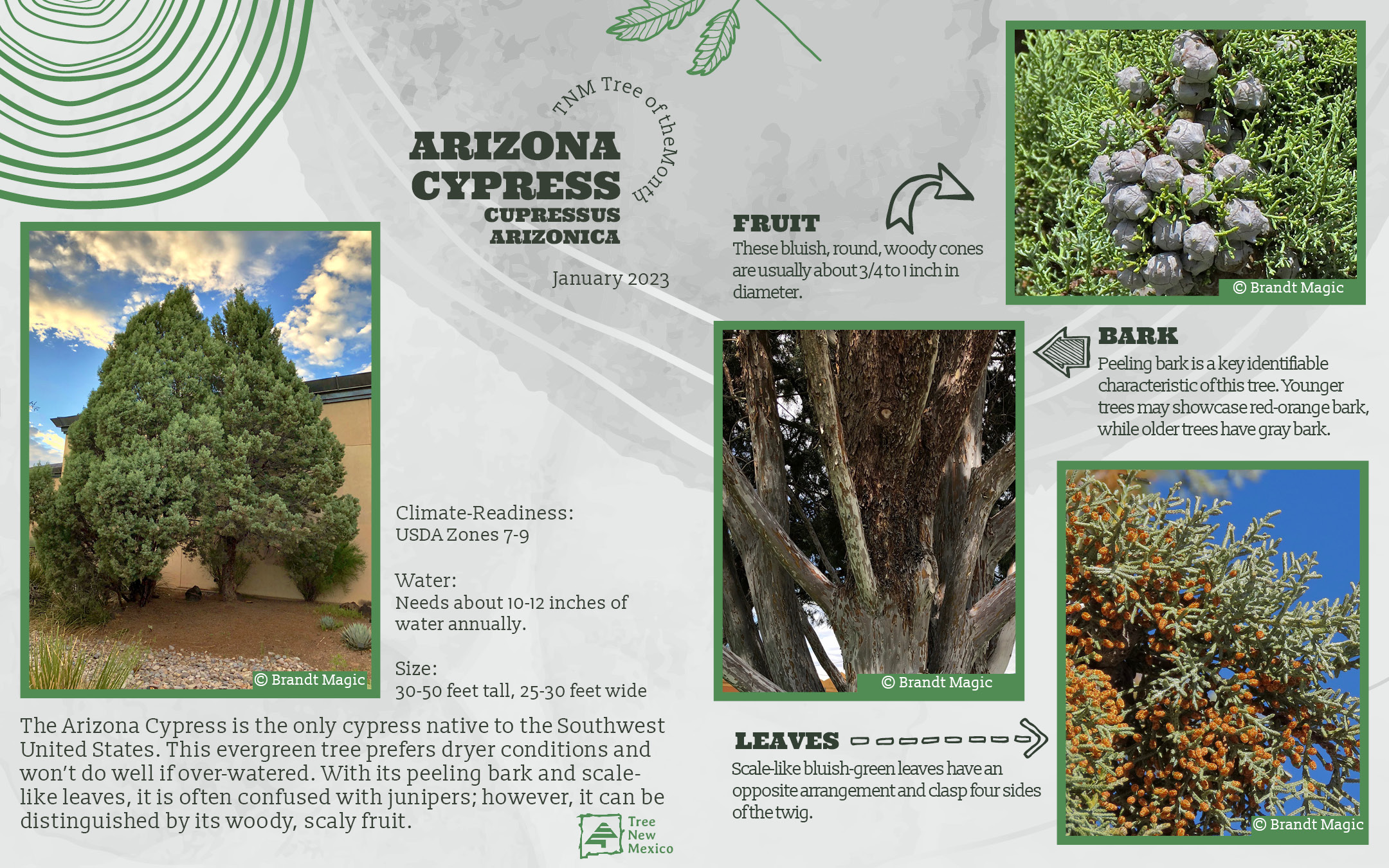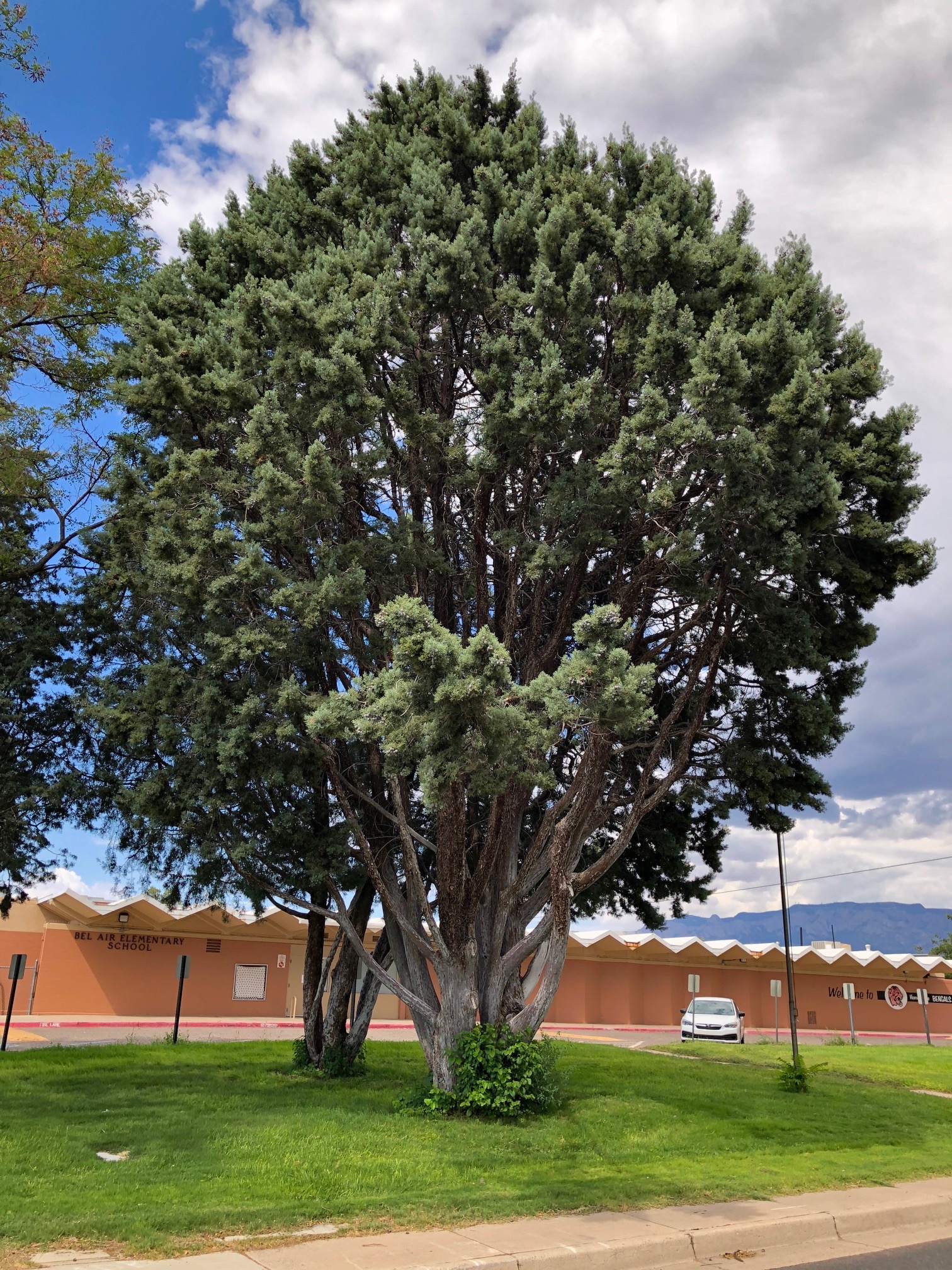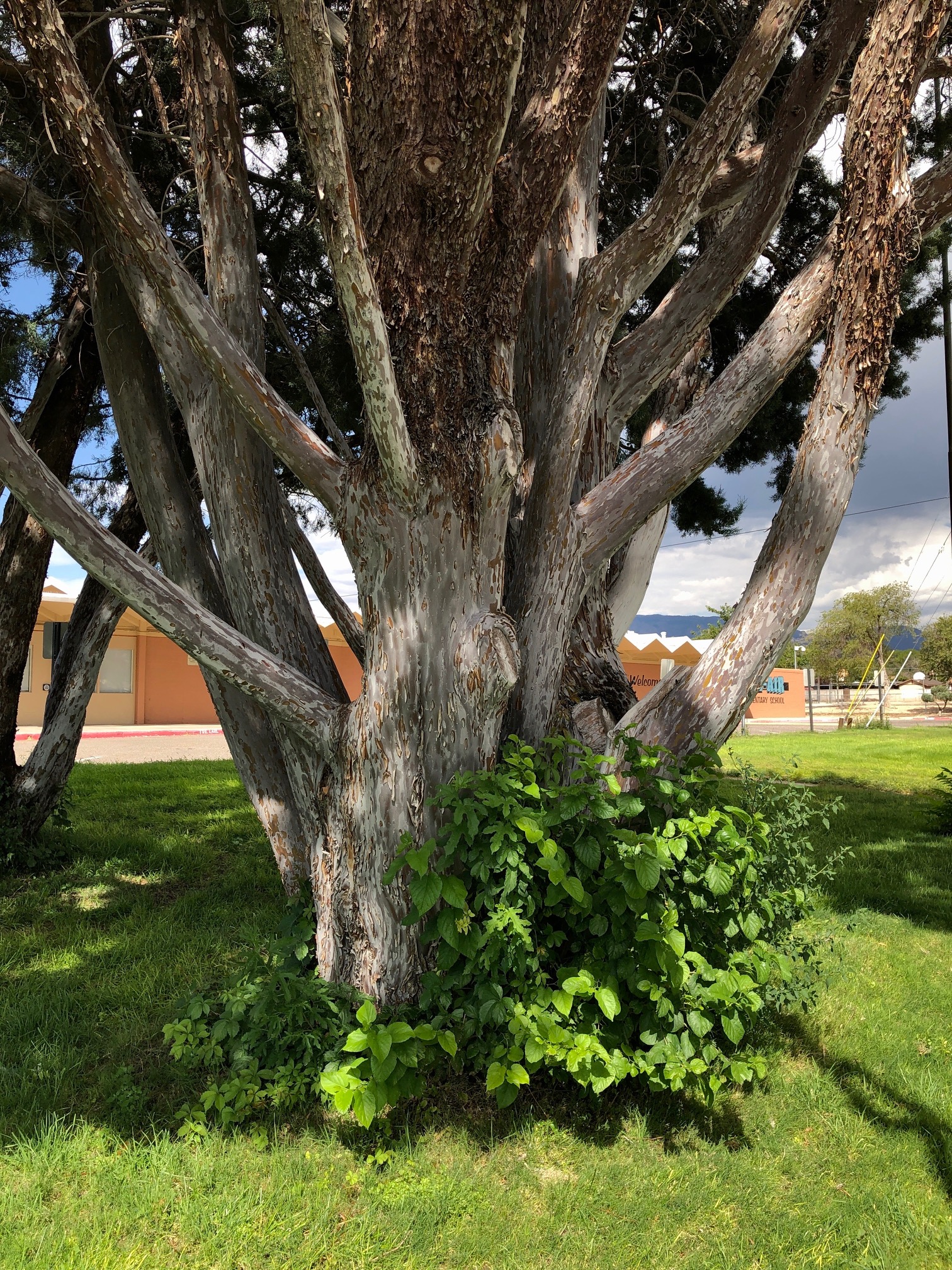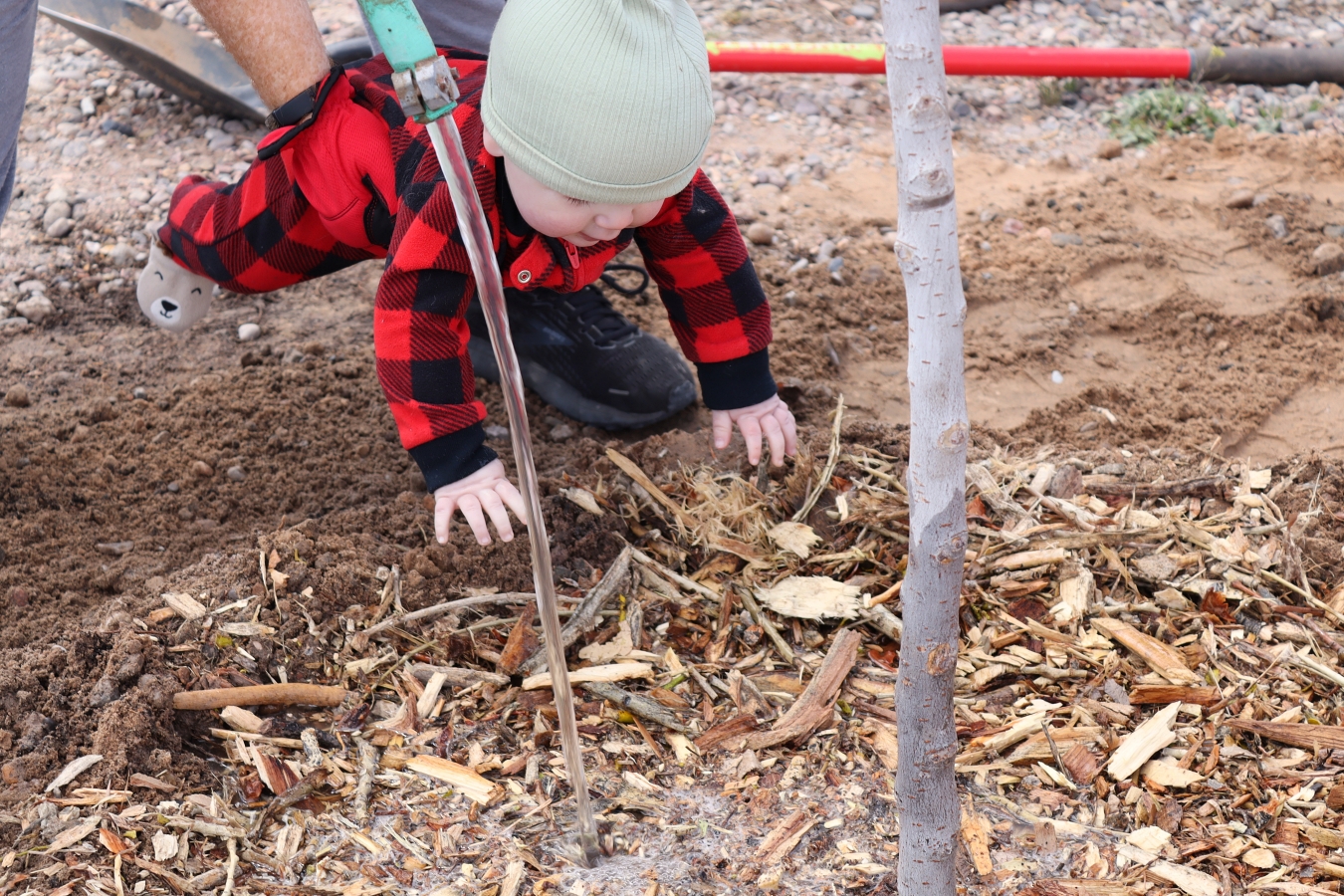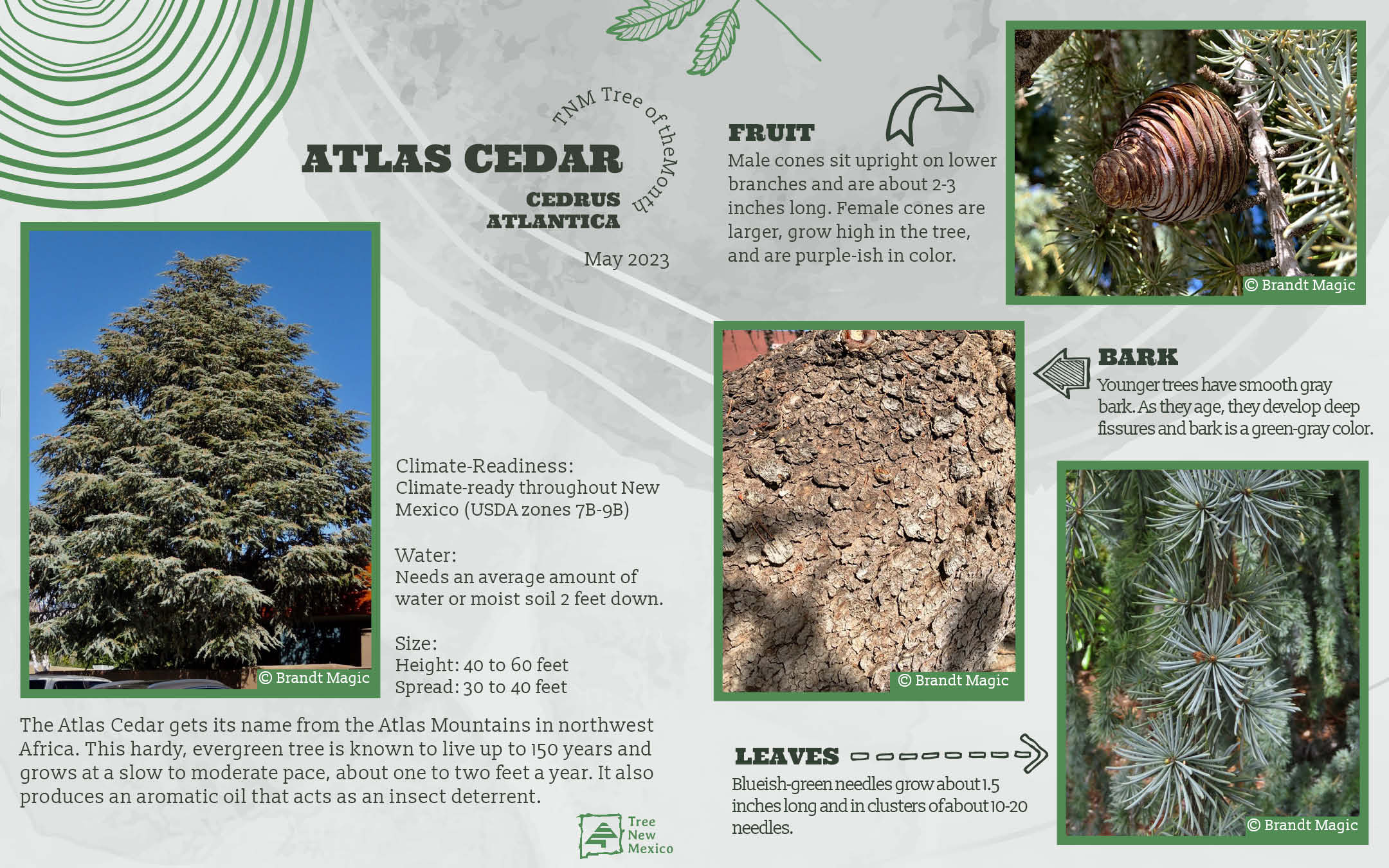
Tree New Mexico Gratitude – Winter 2022 Newsletter
December 15, 2022
Announcement about Suzanne Probart, Beloved Founder of Tree New Mexico
January 11, 2023
Arizona Cypress
Scientific name: Cupressus arizonica
Family: Cupressaceae, Cypress Family. Arizona Cypress is found naturally on dry, sterile, rocky mountain slopes and canyon walls, but does very well when planted on better soils or when irrigated. It requires a minimum of 10 to 12 inches of water annually. It is not recommended for elevations of under 3,000 feet. It is not recommended for soils with a high water table. It requires full sunlight for best development, but is subject to sunscald when grown as an ornamental. Though it grows slowly under natural dry conditions, it is a rapid grower (up to 3 feet per year) on better soils with a good moisture regime. Arizona cypress generally requires little maintenance. Deep watering at least every other week is necessary for desert planting during the growing season. Do not plant the Arizona cypress where wildfires are a possibility as it is susceptible to fire. Arizona cypress ordinarily has few disease pests with its principal enemies being mistletoes and rusts. The cypress bark beetle may be troublesome by mining twigs on individual ornamentals but this is rare.
Description: Cupressus arizonica greene, Arizona cypress, is the only cypress native to the southwest. It is evergreen, with a dense, upright, conical crown.
Planting: Arizona cypress is usually available as 1 year old potted stock. It should be planted in areas where there is at least 10 to 12 inches of water available annually either naturally or through irrigation. Early spring is the best time for planting. For windbreaks 6-foot spacing in rows is recommended. Open sunlight is required for best growth.
Preferred Habitat: Dryer sites – widely planted ornamental
Leaves: Leaves are scale-like and grayish-green, bluish-green, or silvery, arranged opposite in pairs and tightly clasping the cord-like or four-sided twigs; they emit a fetid odor when crushed
Flowers: Blooms in Spring/Summer – Cones retained to Winter
Fruit: The cones are 3/4 to 1 inch in diameter, subglobose, dark reddish brown, with 6 to 8 shield-shaped woody scales. The cones mature in autumn of the second season but persist on the tree for many years.
Bark: Smooth reddish-brown bark that sometimes becomes fibrous with flat ridges.
Elevation: Up to 7000 feet.
Climate-ready Zones: USDA: 7-9
Frost Tolerance: Hardy to -15°F (-30°C)
Heat Tolerance: Excellent
Sun Exposure: Full sun
Origin: USA (central Arizona)
Growth Habits: Deciduous tree, 30-50 feet tall or more
Watering Needs: Needs very little when established (2 to 3 years after planting.) Requires a minimum of 10 to 12 inches of water annually.
Propagation: Seeds
- Arizona Cypress © Brandt Magic
- Arizona Cypress © Brandt Magic
- Arizona Cypress Bark © Brandt Magic
- Arizona Cypress Fruit © Brandt Magic
- Arizona Cypress Fruit © Brandt Magic
- Arizona Cypress Leaves© Brandt Magic

